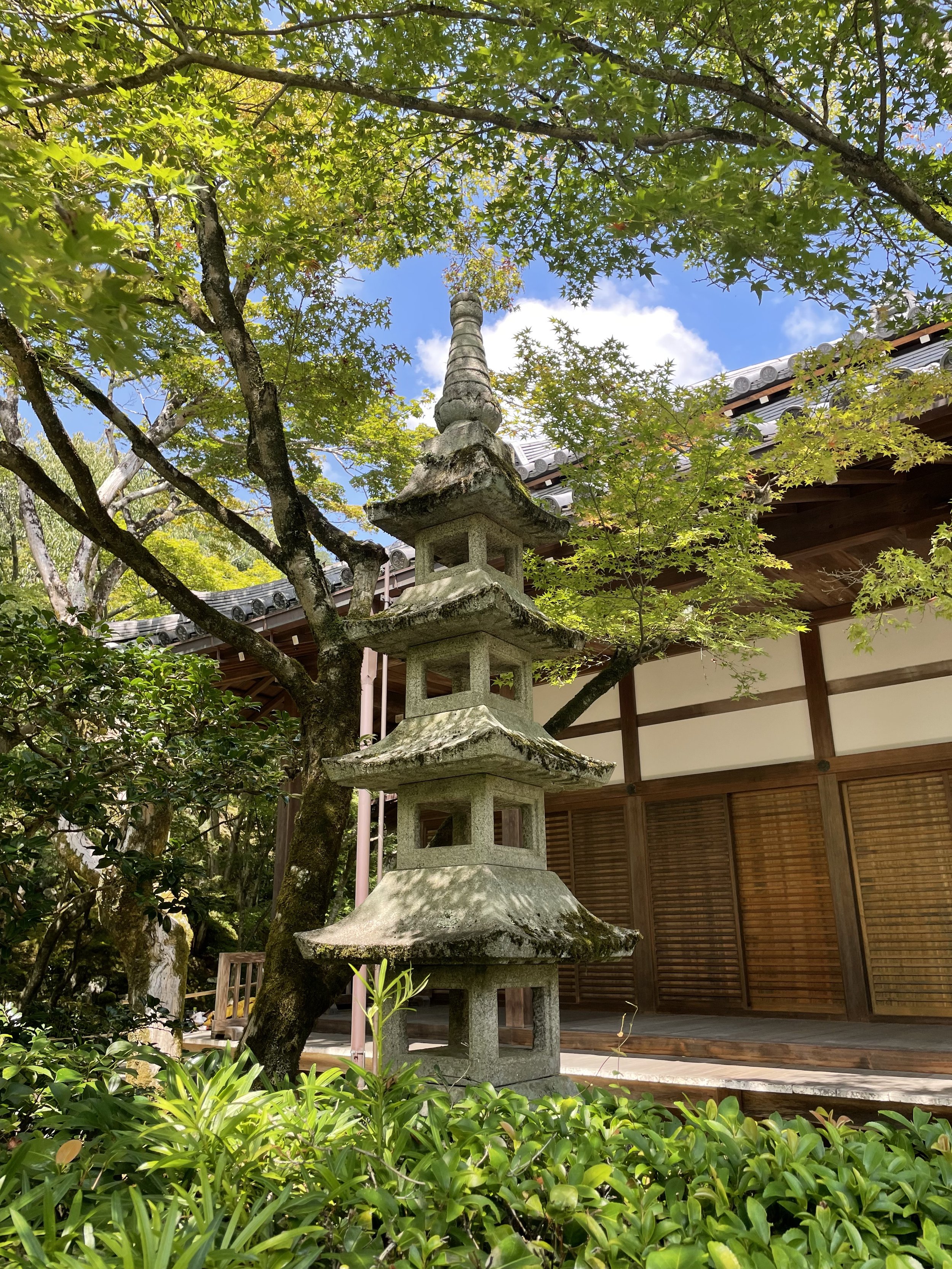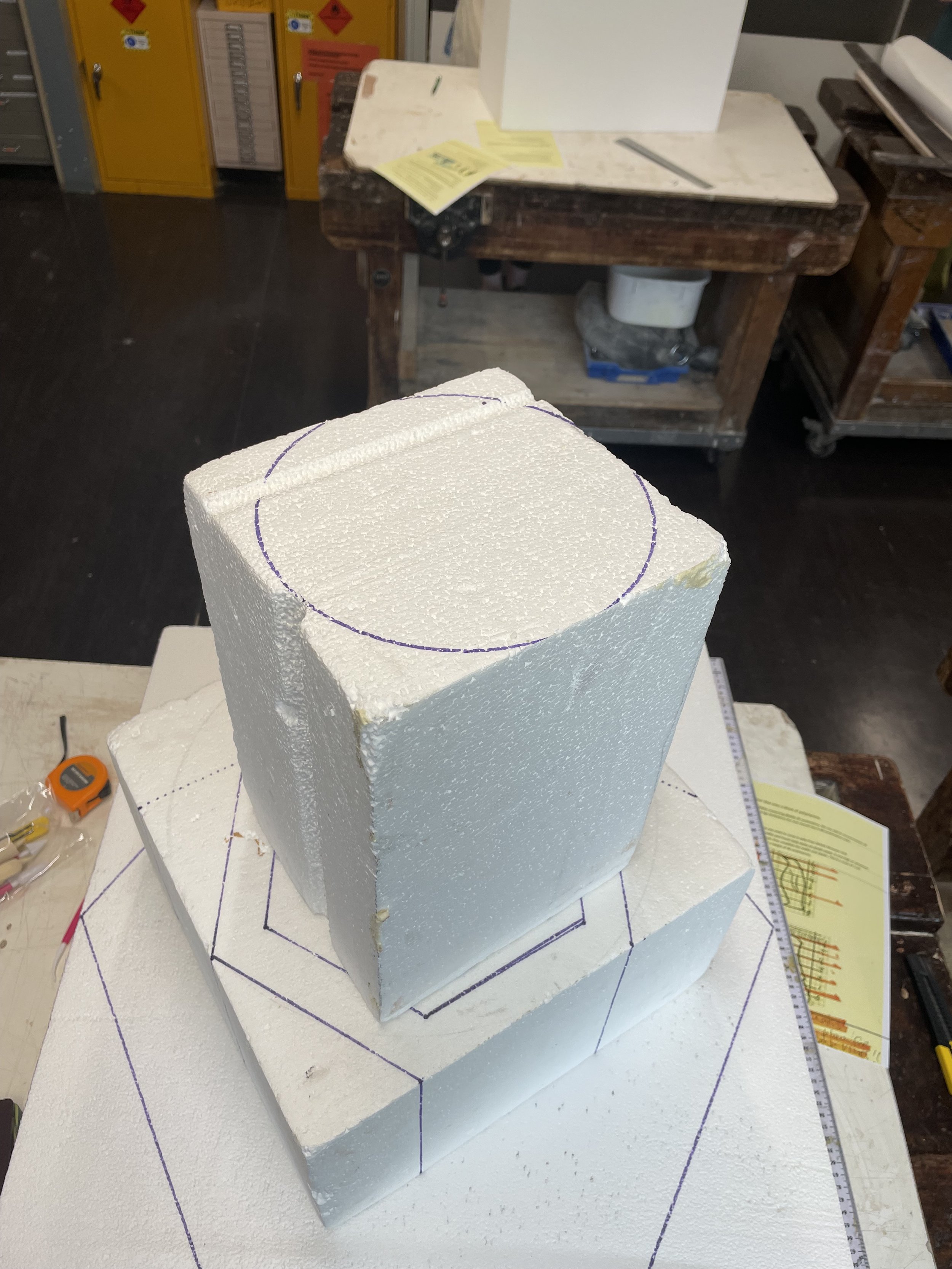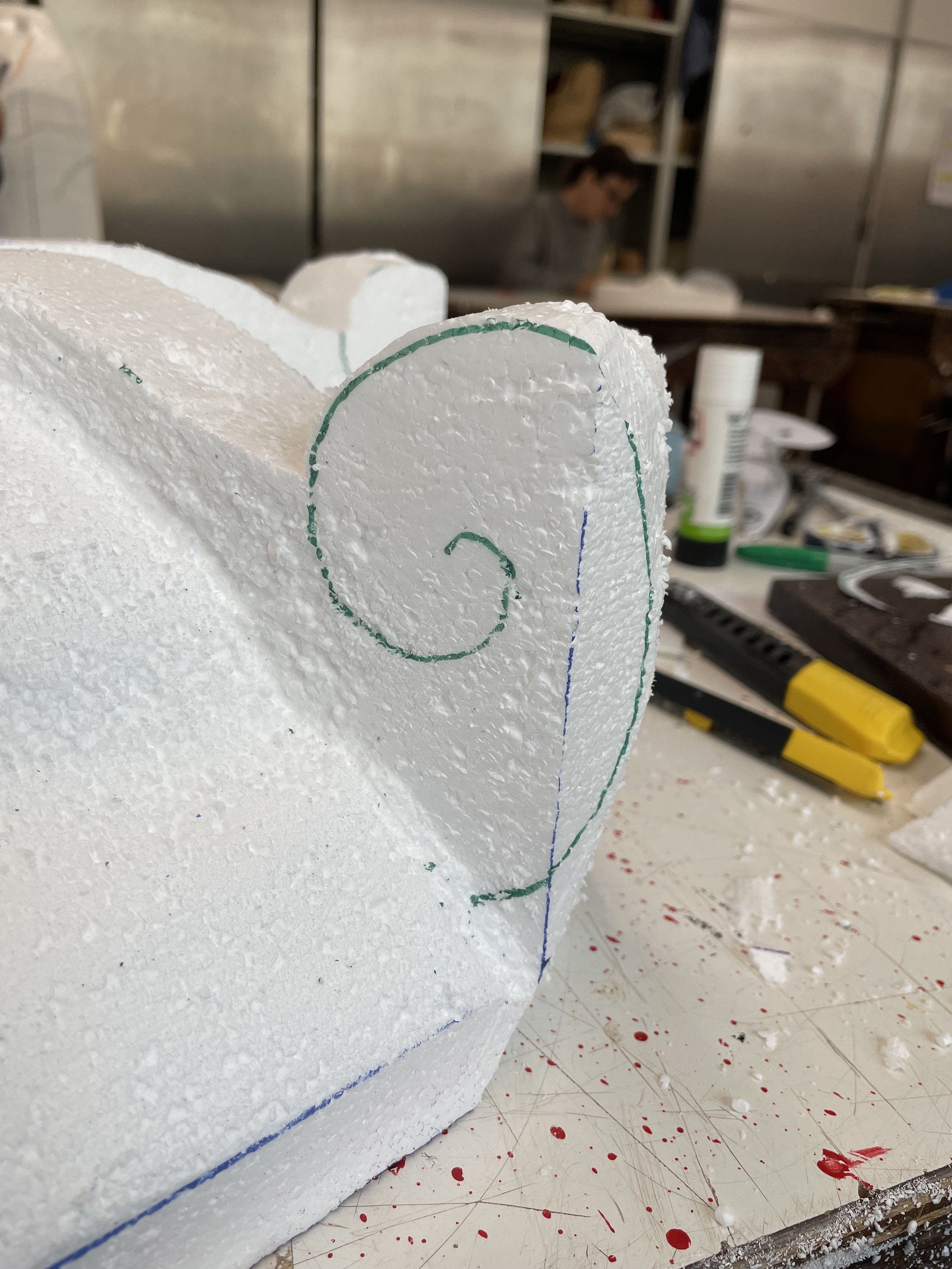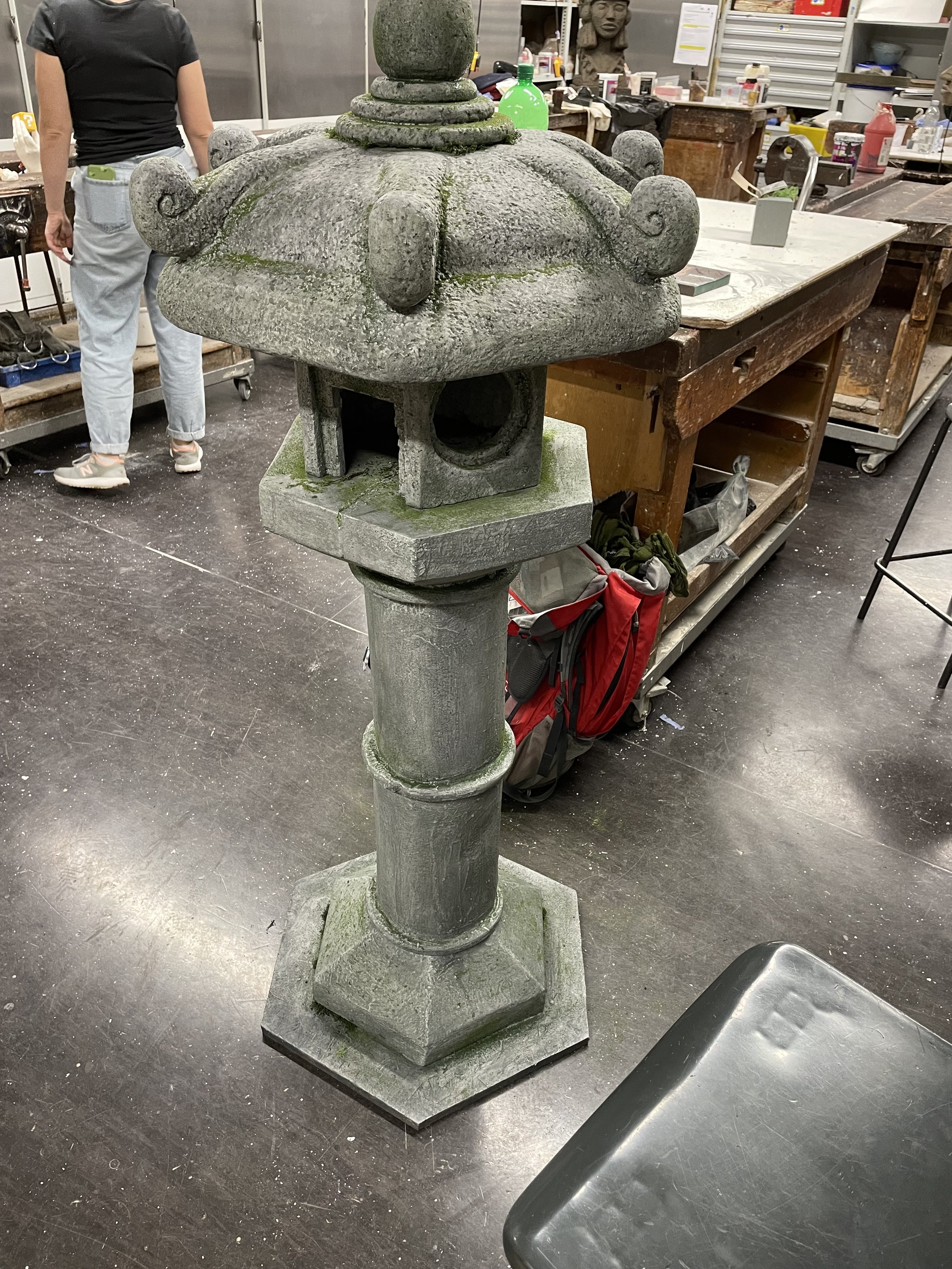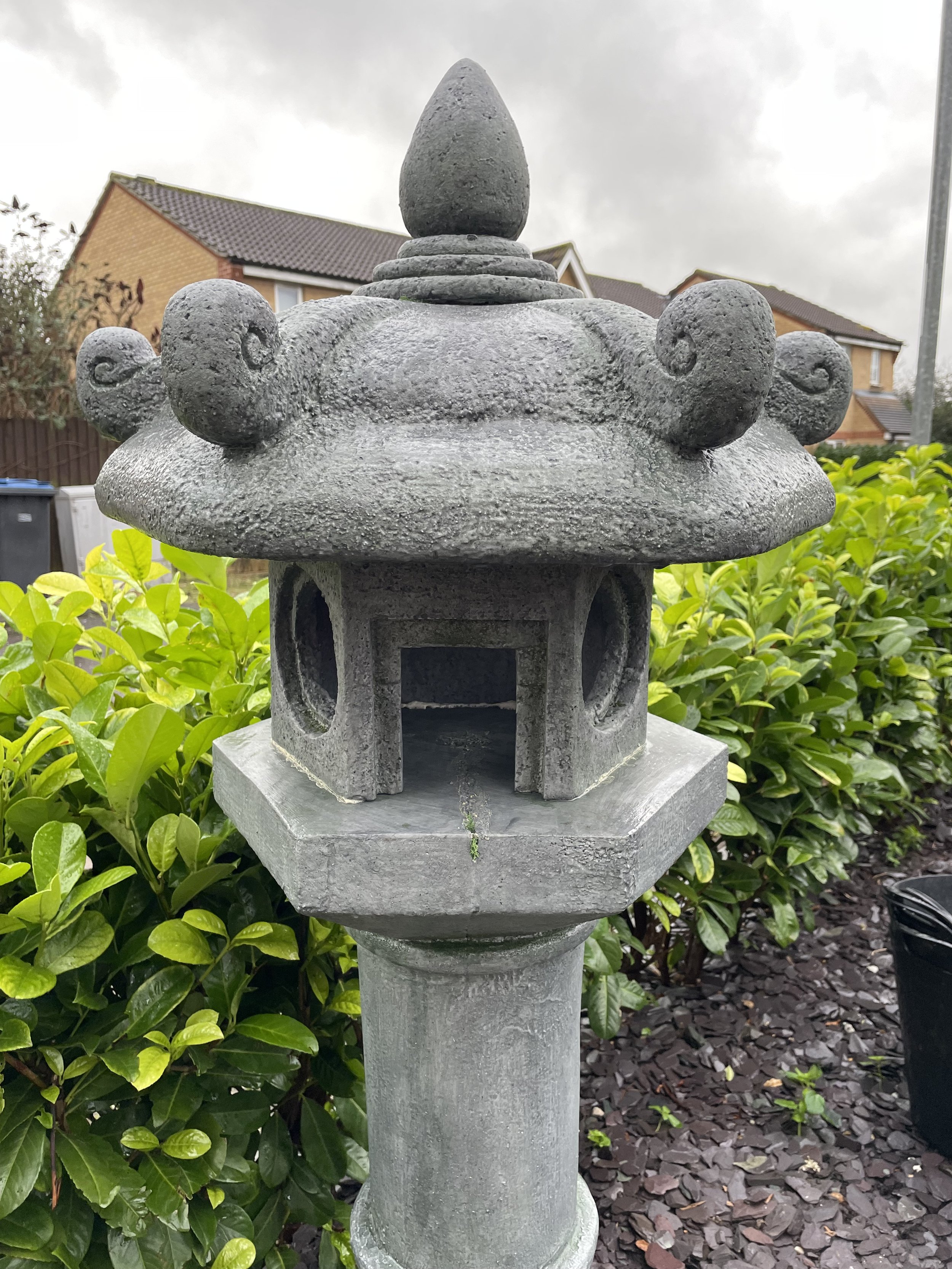
Japanese Pagoda
Course Project - “Introduction to Prop Making course”, City Lit, London, Sep - Nov 2023
Main Materials: Polystyrene, Expanding Foam, Wood, Acrylic Paints
Techniques: Hotwire, Sculpting with knife/saw/wire brush, sanding
In September 2023, I began retraining in Prop Making y enrolling on an “Introduction to Prop Making Course” at City Lit in London. Part of the course required us so sculpt an object out of Polystyrene. Inspired by a recent trip to Japan, I chose to construct a traditional Japanese Pagoda.
Using reference images from the trip, an initial design of mixed, but still traditional elements was created with measurements and split into sections to know how many blocks of Polystyrene were required.
The Polystyrene blocks were measured and marked up according to the design. Once cut with a hot wire, the pieces were stacked to check for scale and stability. It was decided at this point that a heavy base with a pole fixed to it, to run up the centre of the columns would be needed for stability, so the course tutor and I discussed how to make a channel in the middle of the columns using the hot wire and when that should be done in the overall process of construction.
Using retractable knives, saws and wire brushes, the shapes and details such as the square doorway, circular windows, gradient of the roof and scroll work were added and refined. A pyrography pen was used to add the finer carved lines and the surfaces were sanded to a consistent texture. as the Pagoda would be painted to look like stone, the surface needed to retain some roughness, so wasn’t sanded completely smooth.
Once carving was complete, the sections were assembled over the base and pole and secured using expanding foam.
The polystyrene was sealed with a mixture of Polyfilla and PVA glue.
All parts were painted with a base coat of grey before washes of darker colour were applied to bring out the texture that was deliberately not sanded too smooth.
Several shades of grey washes were repeated to bring out the details and textures. To give the appearance of lichen, washes of green were used in specific places plus artificial moss and model railroad grass to replicate the growth of lichen (lichen grows more in shaded, damp areas).
Here is the finished pagoda in the workshop!
